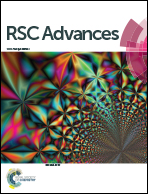Room temperature ferromagnetism in D–D neutron irradiated rutile TiO2 single crystals
Abstract
Room temperature ferromagnetism (RTFM) was observed in unirradiated rutile TiO2 single crystals prepared by the floating zone method due to oxygen vacancy (VO) defects. D–D neutrons mainly collide elastically with TiO2, producing VO, titanium vacancies (VTi) and other point defects; the density and kind of defect is related to the neutron irradiation fluence. D–D neutron irradiation is used to regulate the concentration and type of defect, avoiding impurity elements. As the irradiation fluence increases, the saturation magnetization (Ms) first increases, then decreases and then increases. To verify the origin of RTFM, the CASTEP module was used to calculate the magnetic and structural properties of point defects in TiO2. VO induces a 2.39 μB magnetic moment, Ti3+ and F+ induce 1.28 μB and 1.70 μB magnetic moments, respectively, while VTi induces a magnetic moment of ∼4 μB. Combining experimental and theoretical results, increases in VO concentration lead to Ms increases; more VO combine with electrons to form F+, inducing a smaller magnetic moment. VO and VTi play a key role and Ms changes accordingly with larger fluence. VO, F+ and VTi are the most likely origins of RTFM.



 Please wait while we load your content...
Please wait while we load your content...